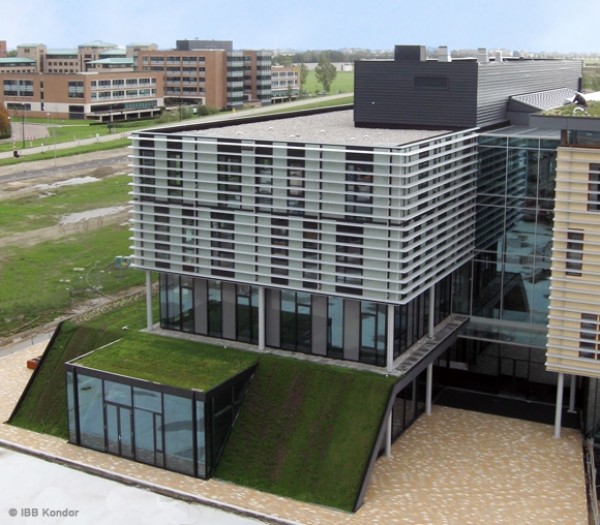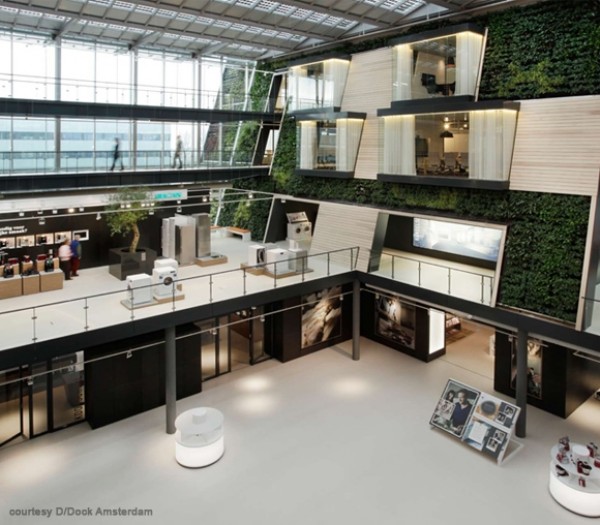Cradle-to-cradle design and cutting-edge green tech combine in the building known as the Bosch Siemens Hausgeräte (B/S/H/) Inspiration House. Located 15 kilometers south of Amsterdam, in the Netherlands, the building is home to five of the top global brands in energy efficient household appliances — Bosch, Siemens, Gaggenau, Neff and Constructa — and is the first structure designed for Park 20|20, the first cradle-to-cradle-inspired full-service development in the Netherlands.
The visionary behind the “inspiration” here was architect William McDonough, working with none other than Michael Braungart, the founder of the cradle-to-cradle movement. The two are long-time partners in McDonough Braungart Design Chemistry (their product design and development firm), and in 2002 coauthored the book Cradle to Cradle: Remaking the Way We Make Things. The B/S/H Inspiration House was designed to fully embody the principles of cradle-to-cradle design, which holds that humans can have a positive, rather than negative, impact on ecosystems by retooling our economic, industrial and social framework to become not only efficient but also essentially waste free.

Practically speaking, it means that nearly every material used to construct this building can either be recycled or returned to nature when it reaches the end of its natural life.
This may sound like a radically green proposition. But the Netherlands, as a whole, is fertile ground for radically green propositions. From co-op wind power to floating architecture (designed as a hedge against rising sea levels), biofuels-powered ice cream to sustainable global expos, the Netherlands is no stranger to sustainable innovation. The B/S/H Inspiration House was designed as a flexible, innovative workplace as well as a showroom to support the expansion of its parent brands into the burgeoning Dutch market for smart green tech.
“The decision for a cradle-to-cradle building in the Netherlands is a good fit with BSH’s sustainability goals and strategy. With our super-efficient home appliances, we make an important contribution to resource conservation and as long ago as 2008 we were already recognized as Germany’s most sustainable company for our responsible approach to the environment,” said Kurt-Ludwig Gutberlet, Chairman of the BSH board of Management, in a statement.
Inhabitat reports that the centerpiece of the building is a four-story atrium with a living wall that plays a significant role in supplying the facility with fresh air. This beautiful display of vegetation makes good use of the natural daylight the filters down through a serrated skylight, which is also outfitted with building-integrated solar photovoltaic panels. The building also features a green roof, which helps to improve the eco office/showroom’s energy efficiency.

Other efficient touches are evident throughout the B/S/H Inspiration House in the form of daylight sensors, LED lighting and a ground-source heating and cooling system. Captured rain water is filtered and stored, along with grey water, for reuse in toilet fixtures. In keeping with its zero-waste, cradle-to-cradle design theme, the building also treats its own sewage on site via a black water system. This system, combined with a nutrient management system, captures nutrients such as nitrogen, phosphorous and carbon for reuse.
If you find yourself in Hoofddorp, where the B/S/H Inspiration House is located, feel free to stop in and check it out. And if you arrive after hours, don’t worry: unlike conventional offices and showrooms, this facility will be open in the evenings and on weekends.